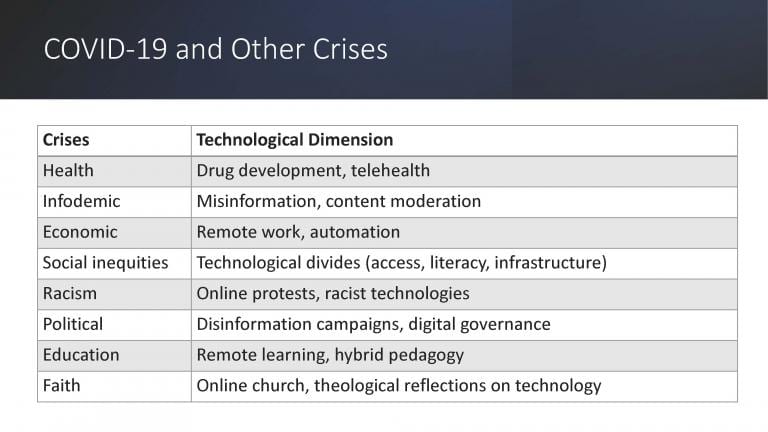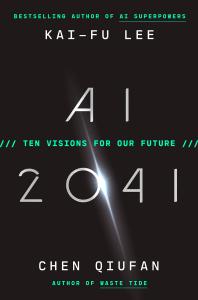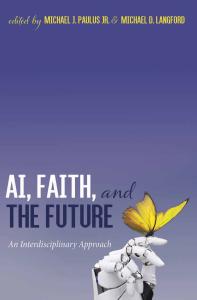In my last post, I referred to a recent report from the Pew Research Center on expectations about life after the pandemic. The responses captured in the report, gathered during the summer of 2020, are mixed about whether life in 2025 will be mostly worse (47%), better (39%), or about the same (14%). Identifying troubling as well as promising trends, the report points to a “broad and nearly universal view … that people’s relationship with technology will deepen.”
Before the pandemic, especially within the last ten years due to advances in AI, there was broad awareness of the need to critique and integrate digital technologies into our lives and institutions more intentionally. Luciano Floridi’s fourth information revolution and Klaus Schwab’s fourth industrial revolution emphasize the philosophical and practical needs for both digital ethics and digital transformation. The pandemic has accelerated the adoption of digital technologies, from “tele-everything” to automation, and it has revealed opportunities as well as challenges—including the technological dimensions of larger social concerns.

During the pandemic all of us have become much more aware of how online and offline experiences are different but also integrated. In virtual events our sense of place is extended, and sometimes dislocated, but those virtual connections can enrich our local situations—especially when they are connected with ongoing relationships that cross modalities. Most of us, after a year of mostly digitally mediated experiences, are eager for a new balance. As we seek this balance—or, better, integration—it is important we do not return to a simplistic view of online/digital versus offline/physical dualisms.
Digital transformation should be more about digital augmentation than amputation. Over the last year, we have seen new forms of engagement in virtual classrooms, workplaces, and churches. Some of these have not been as fulfilling as their pre-virtual forms, but others were or were simply new possibilities. As we discern how best to avail ourselves of the affordances of different modalities, the more constructive courses of action will focus on how we can collapse the dualities of online/digital and offline/physical modes of experience. How can we integrate digital practices and platforms into our embodied lives wisely? How can we bring pre-digital wisdom into our digitally enhanced lives?
There is a line of technological criticism that sees technology—especially technology created over the last few hundred years—as an ultimately corrupt and inhuman force. Jacques Ellul and Neil Postman, who are among the most prominent critics in this line, speak of technology in terms of a curse, something that is “not part of God’s plan.”
Albert Borgmann, another important critic of modern technology, claims that our pre-industrial condition “calls forth a life of engagement that is oriented within the physical and social world” whereas modern technological culture “induces a life of distraction that is isolated from the environment and from other people.” For 300 hundred years, he claims, “modern technology has been dissolving traditional structures and indulging our weaknesses” (Power Failure, 33, 112). Borgmann’s solution is a call to return to simpler focal things and practices, such as sharing a meal or playing the piano.
As helpful as Borgmann’s criticisms may be, a more constructive line of critique is needed for our technological moment. A return to older forms of technology (tables, pianos, etc.) is not sufficient: while we may retain these, we also need to create new substantial things and practices that include digital technologies. We need to seek and practice wisdom that includes the digital.
I am not bold enough to predict whether or not most people will be better off in 2025; there is still so much suffering and loss to lament, and the pandemic is not over. But there are emerging technological trends that point to a better post-pandemic reality—if we proactively engage with them.
This week the Stanford Institute for Human-Centered Artificial Intelligence (HAI) hosted a conference on intelligence augmentation, which explored ways AI can augment healthcare, art, and education. Given the rapid and widespread adoption and acceptance of healthcare technologies during the pandemic, there seem to be many areas for further digital transformation. In Art, and in our socially disrupted moment, AI presents an opportunity to reconceptualize values associated with creative works as well as introduce alternative narratives about technology. And, following new insights from the science of learning and recent educational experiments, we can develop innovative ways for AI to improve education.
Technological skeptics can help us understand dilemmas and dangers associated with technological change—what we may lose, what we risk, and how we will be changed—but the pandemic has pressed us to graduate from their schools, to pay attention to what has been happening, and to begin creating better technological futures.












